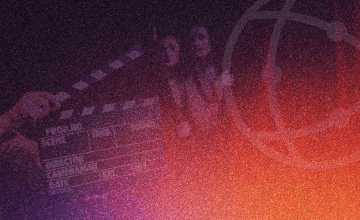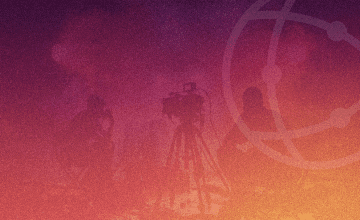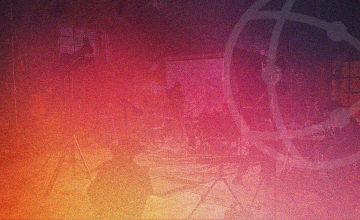Indigenous Enterprise returns to New York City with their performance ‘Still Here’ at The Joyce Theater from September 16–21. This production celebrates their 10th anniversary and features a collaboration with filmmaker Stephanie Gumpel, highlighting resilience and Native joy through animation and live dance.
Indigenous Enterprise, a Native American dance troupe renowned for showcasing powwow traditions on major stages, returns to New York City this week with their performance Still Here, running from September 16–21 at The Joyce Theater. This performance marks their 10th anniversary and serves as a reflection on resilience, memory, and Native joy.
At the heart of the production is a collaboration with filmmaker Stephanie Gumpel, who co-directs the animated film that opens the show. Gumpel expressed her excitement, stating, “The first time we told these stories in a very different way was in 2021 at The Joyce. So it’s awesome to be doing it again. Having another chance to tell these sacred Indigenous stories through animation has been incredible.” Gumpel, who transitioned from a career in modern dance to animation at ShadowMachine (known for BoJack Horseman and Guillermo del Toro’s Pinocchio), shared how her connection with the troupe began.
“I decided I wanted to make a feature film in 2020. I reached out to Kenneth Shirley of Indigenous Enterprise because he’s an Indigenous dancer, and my film will take place in Monument Valley, a Navajo reservation. He was very open to the idea, and there was an incredible collaborative energy between us,” Gumpel explained.
Shirley mentioned that The Joyce had invited him to create a show, which Gumpel found to be an extraordinary opportunity. “Coming from a modern dance background, a show at The Joyce Theater is like saying, ‘Oh, you’re gonna play at Yankee Stadium in the World Series.’” After expressing her eagerness to learn more about the performance, Shirley asked, “Do you wanna help?” to which she enthusiastically replied, “Yes, I wanna help!”
Their first collaboration, completed in just eight weeks, resulted in an eight-minute animated film that received attention from The New York Times and was archived in the New York Public Library. When The Joyce invited Indigenous Enterprise to kick off its fall season, Shirley again invited Gumpel to join. “There was no way I could say no. This is such a special project. These kinds of projects are rare, and it feels like a once-in-a-lifetime opportunity, and we’re getting it twice,” she said.
The new animated short is significantly more ambitious, featuring about 20 minutes of animation integrated into an hour-long performance that alternates between film sequences and live dance with powwow music. Gumpel described the short: “Grandpa talks about these dances, sharing stories and teaching his grandson how to sing and play the drum. Between each story, there will be live dance and music.”
Producing this level of animation without studio support was challenging. “I am producing this entirely through my animation studio, Studio Novella, which is a boutique animation studio. We received about $10,000 in grant funds from Indigenous Enterprise, which is also a nonprofit,” Gumpel noted. She expressed gratitude for the contributions from her team, stating, “Shout out to the artists, because everyone was on board. They understood how important this was. In the U.S., there’s limited public funding for this type of work, and what is available is scarce.”
Gumpel’s team consisted of around a dozen artists who were compensated less than they deserved due to the project’s significance. “Carrying someone else’s story is an honor and a responsibility. I take that extremely seriously,” she said. Although she initially had concerns about being a non-Native director, Gumpel chose to trust the process and respect that she was the filmmaker selected by Shirley to animate his story. She also looked forward to the distribution opportunities for the film, which would allow it to reach a wide audience, especially in Indigenous schools. “The last time we did this, the film circulated through Native American schools, allowing children to see themselves reflected in animation,” she explained.
“Children perceive animation differently than adults,” she continued. “It’s powerful for them to see themselves represented in animated characters that are complex and to see their ancestors and culture depicted beautifully.” Authenticity was a guiding principle throughout the production. Dance sequences were rotoscoped to ensure cultural accuracy, while background painter John Holsinger used impressionistic digital techniques to capture the golden-hour desert light. “The technique is called two and a half D. The characters are hand-drawn, 2D, and they sit in space like 2D drawings. We project the backgrounds onto 3D objects, creating a tactile result,” Gumpel explained.
For Gumpel, Still Here is ultimately about empowerment, both onstage and off. In her film, “Nat is the main character. He doesn’t live on the reservation and is the only Native kid in his class, facing bullying for his braids and being Navajo. He turns to Grandpa, who knows just what he needs,” she described. This is when the song and dance of the Navajo tribe enter the film, coinciding with the live performance by Indigenous Enterprise. As the organization celebrates its 10th year, Still Here serves as a reminder that Native culture is not a relic of the past. By blending ancestral traditions with modern storytelling techniques, Gumpel, Shirley, and all the artists involved ensure that these narratives and traditions are preserved and continue to evolve as a living heritage.
Disclaimer: This article has been auto-generated from a syndicated RSS feed and has not been edited by Vitrina staff. It is provided solely for informational purposes on a non-commercial basis.































